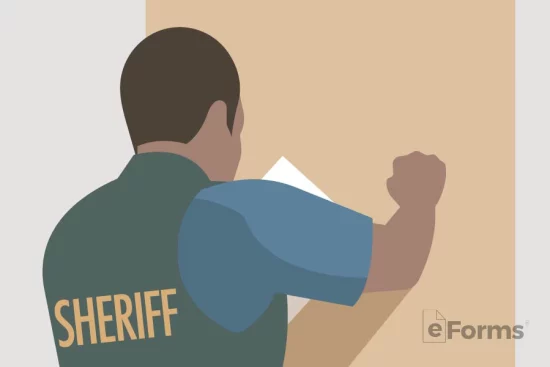Updated February 06, 2024
A Maryland eviction notice is a document required for a landlord to properly inform their tenant that they are in violation of their lease agreement. Sending the notice is the first step in the eviction process and must be filed with the court as evidence if the tenant does not cure the issue. The tenant also has the option to move out of the premises, although they still may be liable for the remaining rent amounts in their lease.
By Type (4)
 10-Day Notice to Quit (Non-Payment of Rent) – The landlord must provide the tenant written notice of intent to file for eviction unless the tenant pays all the rent claimed to be owed within ten days. 10-Day Notice to Quit (Non-Payment of Rent) – The landlord must provide the tenant written notice of intent to file for eviction unless the tenant pays all the rent claimed to be owed within ten days.
Download: PDF |
 30-Day Notice to Quit (Non-Compliance) – When the tenant breaches a lease provision other than non-payment of rent. 30-Day Notice to Quit (Non-Compliance) – When the tenant breaches a lease provision other than non-payment of rent.
Download: PDF |
 14-Day Notice to Quit (Imminent Danger) – For use when a tenant poses a risk of imminent danger or harm to themselves, other tenants, or the property. 14-Day Notice to Quit (Imminent Danger) – For use when a tenant poses a risk of imminent danger or harm to themselves, other tenants, or the property.
Download: PDF |
 60-Day Notice to Quit (Month-to-Month Tenancy) – For use when a landlord seeks to terminate a month-to-month tenancy. 60-Day Notice to Quit (Month-to-Month Tenancy) – For use when a landlord seeks to terminate a month-to-month tenancy.
Download: PDF, MS Word, OpenDocument |
Table of Contents |
Court Forms
Complaint and Summons for Non-Payment of Rent (SAMPLE)– When a tenant has failed to pay rent, the landlord can start an eviction case against them by filing this complaint form with the district court, which will be served on the tenant.
Complaint and Summons for a Violation of the Lease (SAMPLE) – To file a summary ejectment due to a violation of their lease, the landlord will need to fill out the document and submit it to the court.
Petition for Warrant of Restitution (SAMPLE) – If the tenant does not comply with the court’s judgment, the landlord will need to file this form with the court to have the tenant removed by the sheriff.
How to Evict a Tenant (6 Steps)
- Provide Notice
- Get Forms
- Pay Filing Fee
- Complaint and Summons
- Give Notice to Vacate
- File Petition for Warrant of Restitution
1. Provide Notice
If the tenant is in breach of the lease or you are seeking to end a month-to-month tenancy, you must provide one of the following notices to the tenant before commencing eviction proceedings:
- Non-Payment of Rent Notice to Quit – Not required to give to the tenant.
- 14-Day Notice to Quit (Imminent Danger)
- 60-Day Notice to Quit (Month to Month)
- 30-Day Notice to Quit (Non-Compliance)
If you are seeking to have the tenant removed from the property for non-payment of rent, you do not need to provide notice and may proceed directly to Step 2.

2. Get Forms
In order to legally file an eviction in the State of Maryland, the landlord will need to go to the respective District Court where the property is located and obtain the necessary court forms. The required court forms are not available online; however, you can view the following samples:
Note: The city of Baltimore has specific instructions for evictions.


